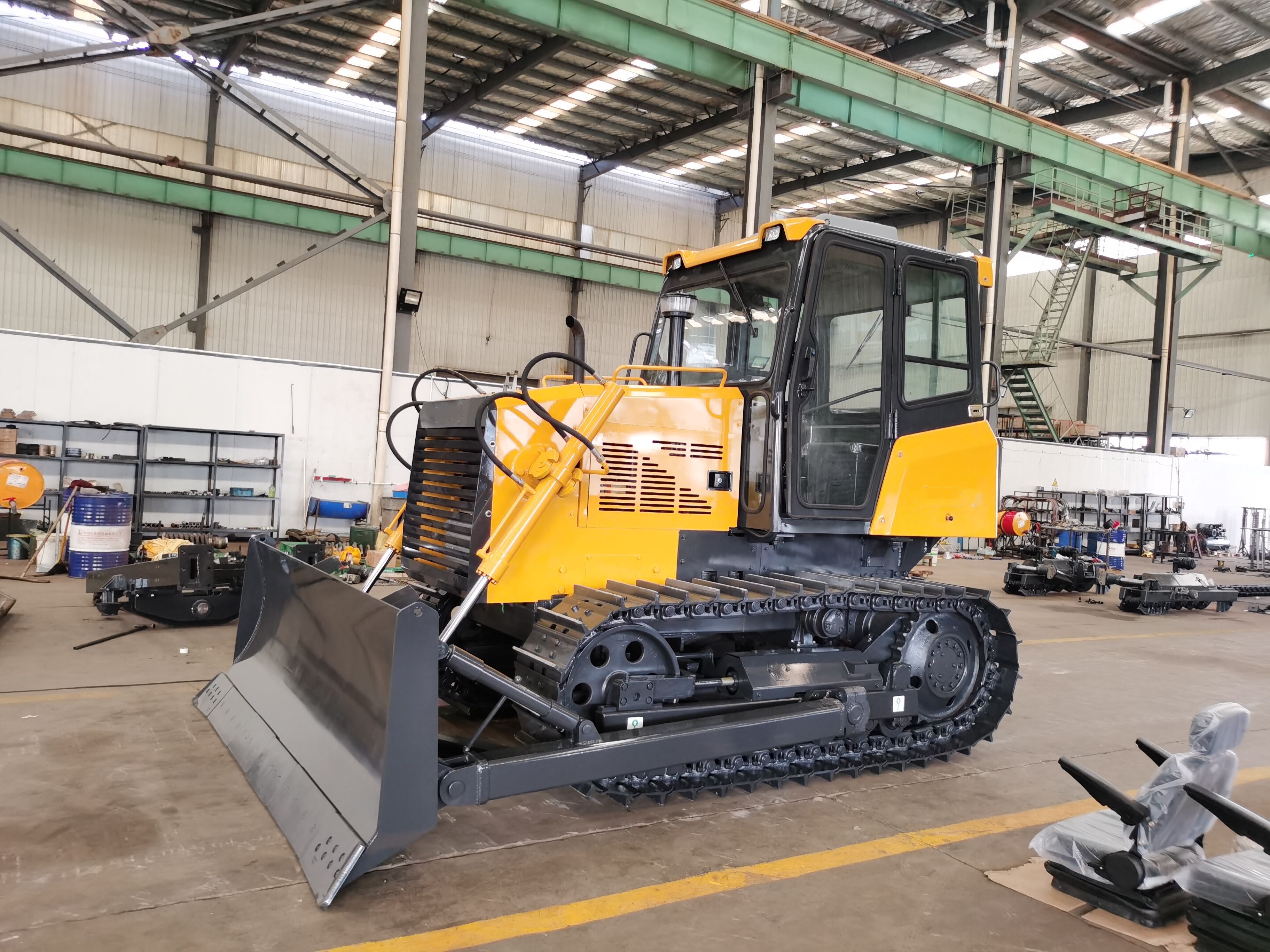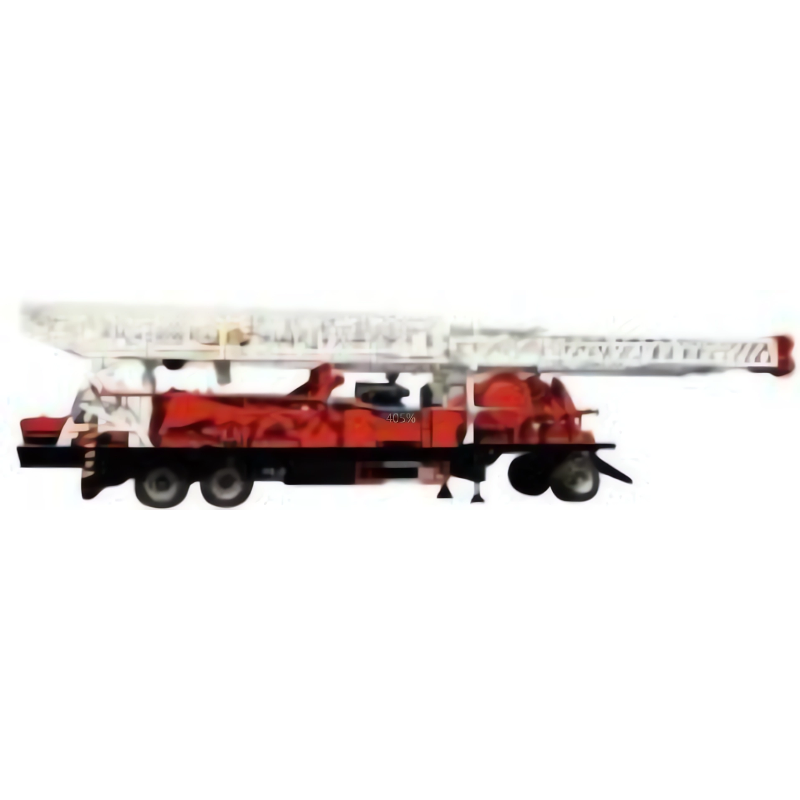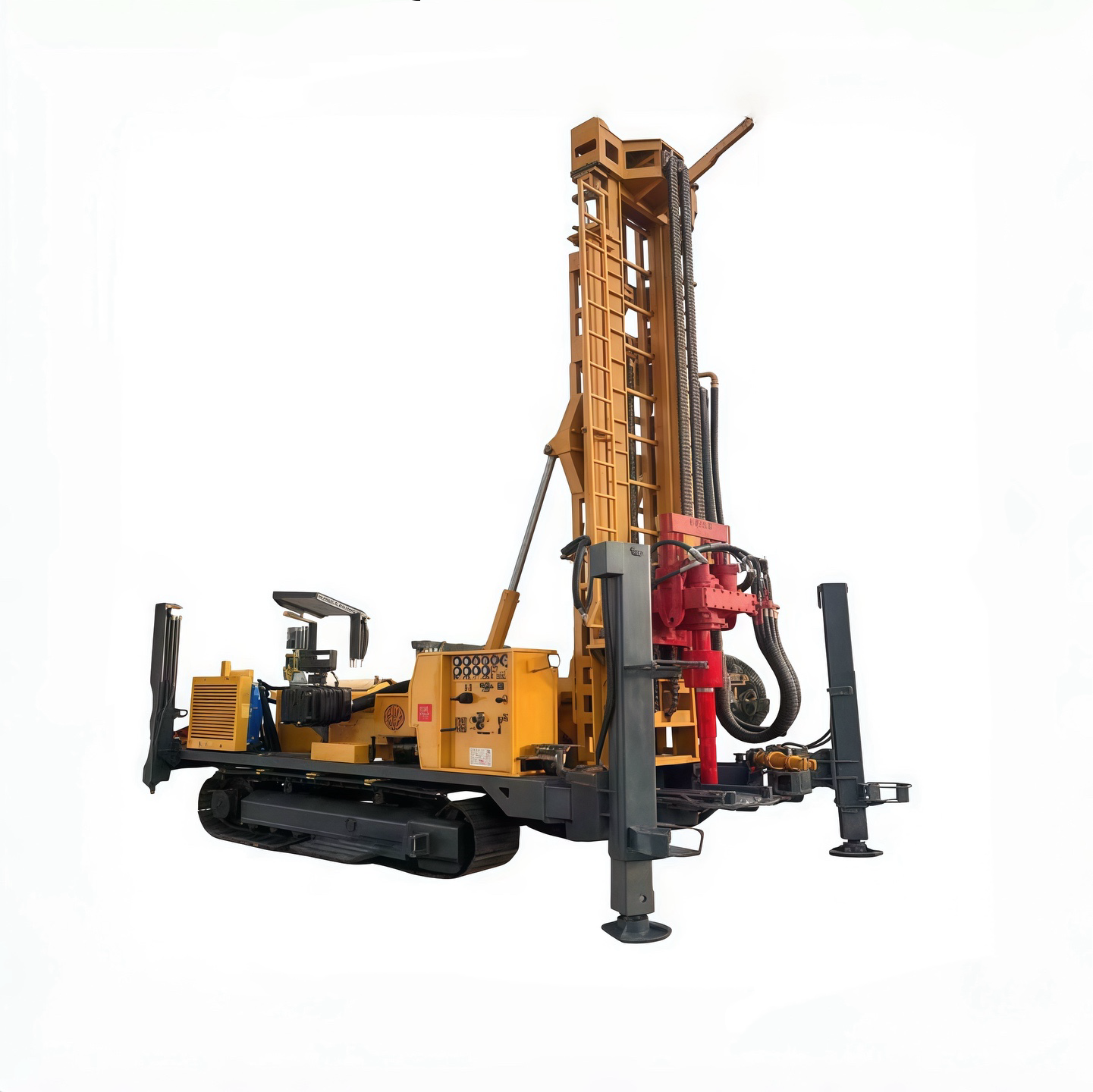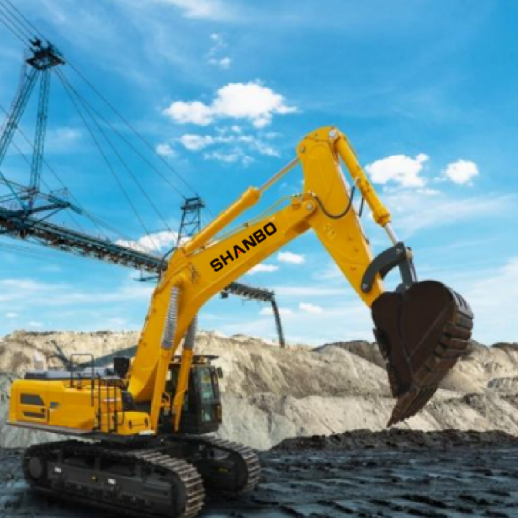Key Differences Between Various Bulldozer Types and Their Uses
Understanding Bulldozers: The Basics and Importance
Bulldozers are heavy duty machines built mainly for digging and moving dirt around on construction sites. They come in really handy when workers need to flatten ground, shift stuff around, or get a site ready before actual building starts. What makes these big machines so useful is their ability to push tons of soil or rubble using those massive front blades. No wonder they're everywhere from roads being built to mines extracting resources, not to mention farms where they help clear fields too. Pretty much any job involving earthwork will have one of these beasts somewhere nearby.
Bulldozers have become essential tools across various sectors because they make work faster and safer on job sites. Industry stats show these machines cut down construction time and save money on labor expenses too. Mining companies rely on them to strip away topsoil and get sites ready for extraction work. Farmers also find them handy for clearing debris from fields and getting soil prepped before planting season starts. What makes bulldozers so valuable is their power to handle tough jobs without breaking a sweat, which explains why so many businesses keep investing in this kind of machinery despite the upfront costs.
A bulldozer relies on several core parts working together to get the job done right. First up is the blade, which does most of the actual pushing when moving dirt, rock, or debris around construction sites. Then there are those big rubber tracks that grip the ground firmly even on rough terrain, keeping the machine stable no matter what surface it encounters. And let's not forget about the engine - a real powerhouse that gives the bulldozer enough muscle to tackle mountains of material. When all these parts function properly, bulldozers become incredibly useful equipment for everything from clearing land to grading roads, making them indispensable in both urban development projects and remote mining operations where conditions can be particularly tough.
When it comes to bulldozer work, safety should always be at the top of the priority list. Today's machines have plenty of built-in protections for those behind the wheel. Most models now feature ROPS and FOPS systems that literally act as lifesavers if something goes wrong during operation. Some newer bulldozers even pack GPS tech along with smart machine controls. These aren't just fancy gadgets they actually help operators get the job done right while staying clear of hazards. The GPS guides them across tricky terrain, and the machine control ensures accurate grading without unnecessary backtracking. What this means in practice is workers stay safer and projects finish faster since there's less room for error or dangerous situations developing on site.
Key Differences Between Bulldozer Types
Knowing what sets different bulldozers apart makes all the difference when picking the right machine for the job at hand. Crawler models stand out as the go to choice for rough terrain and tough jobs because they can handle almost anything thrown their way. Construction sites, mines, and forest operations love these beasts since they grip the ground so well even when conditions get dicey. The tracks give them that extra edge over wheeled alternatives, especially when pushing through mud or climbing steep slopes without slipping.
For instance, in mining operations, crawler bulldozers effectively handle the movement of massive earth quantities, contributing significantly to operational efficiency. Their track-based mobility allows them to perform well even in muddy or snowy conditions.
On the other hand, wheel bulldozers offer distinct advantages in speed and mobility, especially on firm surfaces. These features make them well-suited for urban construction projects, where maneuverability and faster travel between work locations are beneficial.
Wheel bulldozers exert less ground pressure compared to crawlers, which makes them ideal for work on sites with sensitive ground conditions. Their efficient operation without risking surface damage is why they're often chosen for tasks in city centers or where quick dining and excavation are required.
Mini and compact bulldozers were built to handle tricky situations where space is limited. Contractors find these little beasts incredibly useful on home building sites, garden makeovers, and all sorts of small job sites around town. They pack enough muscle to level out backyard slopes or clear away debris from tiny plots that would be impossible for full sized equipment to access. The small footprint means operators can squeeze into narrow alleys between houses or navigate around existing structures without causing damage. Many landscape companies swear by their mini dozers when working near delicate plants or in crowded city environments where bigger machinery just won't fit.
Bulldozer Classifications and Their Applications
Different kinds of bulldozers exist depending on what job they need to do and where they'll be working. Track type models stand out as favorites among construction crews, miners, and folks working in forests. These machines pack serious muscle and stay stable even when things get rough. The tracks give them great grip so they can tackle all sorts of rough ground that's common at job sites. Built tough from the ground up, track bulldozers handle big jobs day after day without breaking down, which makes them indispensable whether it's clearing land for new buildings or moving mountains of dirt in mines.
Wheel type bulldozers really shine when working on hard packed or paved terrain. The extra speed these machines bring makes all the difference in city building sites and roadwork jobs where getting things done fast matters most. Contractors love how they zip across job sites without much downtime compared to tracked models. This means crews can move materials faster between locations during tight deadline situations in growing urban areas.
Bulldozers built for specialized tasks come in all shapes and sizes depending on what the job requires. Take those high track models used when working on mountain slopes or rocky terrain for instance. The manufacturers added some clever engineering touches too, like raising the sprocket position which gives these beasts better ground clearance and makes them grip tighter on rough surfaces where regular machines would struggle. Construction firms report noticeable gains from using these specialized units. One mining operation saw a 30% boost in daily output after switching to this type of equipment for their hillside projects. These machines just handle the tough spots where standard bulldozers fall short, making them worth the investment despite the higher price tag.
Bulldozer Blade Types and Their Specific Uses
Picking the right bulldozer for a job really depends on knowing what kind of blade comes attached and how it works. Take straight blades or S-blades for instance they're great for doing detailed grading work because of the way they cut through material. These blades tend to be shorter than most others since they don't have those extra side extensions that some models feature. Contractors who need to level small areas or prepare surfaces for construction typically go with this type as it gives them better control over the final grade compared to larger blades meant for moving bigger volumes of earth.
This design allows for precise leveling and grading, handling hard-density, medium-density, and fine-grained materials efficiently. For instance, in construction projects involving delicate surface leveling, S-Blades deliver exceptional results by minimizing material disturbance, thus ensuring smooth and even surfaces.
Universal Blades (U-Blades) are crafted for heavy-load handling and optimal earthmoving tasks. These blades are recognized for their curved shape with side wings, making them the tallest and widest type of blade available. U-Blades excel in carrying large loads across long distances, which is evident in heavy-duty construction operations.
For example, during massive earthmoving tasks, U-Blades have proven their effectiveness by moving substantial amounts of soil quickly, reducing the time and energy required compared to traditional methods. Such blades are ideal for working with medium- to soft-density soils, providing a reliable solution for a variety of construction needs.
Power-Angle-Tilt (PAT) blades enhance the versatility of bulldozer operations by offering flexibility in movement. These blades allow lifting, angling, and tilting, which greatly expands the bulldozer's operational capabilities. For tasks like landscaping and road maintenance, PAT blades are indispensable.
They enable precise land shaping and detailed surface work due to their ability to maneuver in all directions. This versatility allows operators to efficiently tackle a range of tasks, from contouring and backfilling to road grading, making PAT blades a preferred choice for projects requiring multidirectional blade movement.
Technological Advancements in Modern Bulldozers
Over the past few years, bulldozers equipped with GPS and machine control tech have made a big difference in how accurately work gets done while cutting down on mistakes people used to make all the time. These systems let operators guide their machines with pinpoint accuracy when it comes to leveling ground or digging holes, which means better outcomes overall. Some studies show that companies using these advanced controls see productivity jump around 40% in many cases. That kind of improvement translates into faster project completion times and less wasted material, something every construction manager appreciates during tight deadlines.
Electric and hybrid bulldozers are changing the game when it comes to saving fuel and cutting down on environmental damage. Construction companies have started adopting these machines because they burn way less fuel than their old diesel counterparts. This means big savings on operating expenses while also putting out fewer harmful gases into the atmosphere. Some research shows that switching to electric or hybrid models can slash carbon dioxide emissions by more than half compared with what traditional diesel machines produce. For contractors looking to green up their operations without breaking the bank, this kind of technology is becoming increasingly important as regulations get tighter around emissions standards across the construction sector.
Bulldozer tech has taken an interesting turn lately with self-driving models starting to appear. These machines could change how construction works entirely by handling jobs automatically without needing constant operator input. We're not there yet though - most of these autonomous bulldozers remain in testing labs or field trials right now. Companies are checking if they can tackle boring repetitive work or handle risky situations where human operators might get hurt. Early results suggest these smart machines might actually make job sites safer while cutting down on errors that happen when people get tired after long shifts.
Choosing the Right Bulldozer for Your Project
Choosing the appropriate bulldozer depends on multiple key factors that need evaluation before making a purchase decision. When looking at bulldozers available in the market, start by evaluating what kind of work needs doing. Large earthmoving projects typically demand robust machines built for heavy duty operations, while smaller jobs around residential areas or maintenance work often benefit from compact models that can maneuver through tighter spaces without causing excessive damage to surrounding surfaces.
The kind of ground we're working on matters a lot when figuring out what specs our equipment needs. Rocky terrain requires different handling than soft sand or mud that can swallow tracks whole. Then there's the weight factor too heavy loads versus lighter ones, plus whether we're moving dirt, debris, or something else entirely. All these things come together to determine which bulldozer makes sense for the job at hand. Bigger machines with more horsepower obviously handle tougher conditions better, while smaller units might get the job done just fine on flatter surfaces with lighter workloads.
While budget constraints often influence purchasing decisions, performance should be a top priority when selecting a bulldozer. Investing in a machine with an efficient engine, advanced hydraulic systems, and durable construction can lead to significant long-term savings.
Whether you're considering a small bulldozer for sale for lighter work or a larger model for heavy-duty tasks, balancing initial investment with long-term operational efficiency is essential. Choosing a bulldozer with low maintenance costs and strong resale value can improve overall cost-effectiveness and productivity.
Different types of bulldozers serve specific purposes, and understanding their applications can help ensure the right fit for your needs. A full-sized crawler bulldozer is ideal for extensive earthmoving tasks, while a mini bulldozer for sale is a great choice for smaller projects requiring agility and precision.
People who need to work in tight spots or do some basic digging around the place might find a small bulldozer for sale exactly what they're looking for. These compact machines pack enough punch while still being able to turn on a dime, which makes them great for things like tilling fields, fixing up properties, or tackling little construction jobs around town. Speaking of smaller options, mini bulldozers take this versatility one step further. They're much easier to move from job site to job site and can fit into storage areas that would swallow regular sized equipment whole. Plus, these little beasts burn less fuel and have controls that make operating them feel almost second nature to most folks. For contractors watching every penny spent, this combination of features really adds up over time.
When looking at what kind of bulldozer they need, buyers should take time to figure out exactly what their projects require and check out all the different models on the market. Some folks might want something smaller that fits into tight spaces without taking up too much room, while others could benefit from a mini model that handles detailed jobs better. Getting the right machine makes all the difference in how much work gets done each day. A lot of contractors have learned this the hard way after buying equipment that wasn't quite right for their specific needs.
Shanbo, a reputable China bulldozer manufacturer, offers a diverse range of high-performance bulldozers tailored to various project needs. Whether you are looking for a bulldozer for sale for large-scale earthmoving or a more compact solution, Shanbo provides the best bulldozer equipment designed for efficiency and durability.

Conclusion: Making an Informed Decision on Bulldozer Types
Knowing what sets different bulldozers apart really matters when picking the right machine for a job site. Take crawler dozers for instance they grip the ground super well and can handle rough terrain, which makes them perfect for big construction projects or mining operations where stability counts. Wheel dozers work differently since they run on tires instead of tracks. These machines move much smoother on roads or delicate ground surfaces, so they tend to show up more often in urban areas or places where damage prevention is important. Then there's mini dozers these little guys pack a punch despite their size. They're great for tight spaces, around buildings, or anywhere normal sized equipment just won't fit through the gates.
Picking out the correct bulldozer starts with really looking at what the job actually requires. Think about things like what kind of ground conditions will be dealt with, how much dirt or rock needs shifting around, plus where exactly the machine will operate day to day. Matching all those practical considerations against what various bulldozer models offer makes sense when making a purchase decision. The different machines covered here each have their own strengths that might fit certain situations better than others.
Understanding these differences helps businesses pick the right equipment for their specific needs while getting better results from day one. Shanbo focuses on selling construction machines and gear, especially known for their range of bulldozers. They've got crawler models for tough terrain, wheeled versions for smoother surfaces, and smaller units perfect for tight spaces where bigger machines just won't fit. What sets them apart? Their factory uses modern production techniques, maintains strict quality checks throughout manufacturing, and backs everything up with solid customer support long after purchase. Domestic clients love what they see, but international markets have taken notice too. From massive road building projects down to minor land clearing jobs, there's probably a Shanbo bulldozer that fits exactly what the job requires.
Recommended Products
 Hot News
Hot News
-
“Water Savior” 200 m Reverse Circulation Water Well Drills Arrive in Uzbekistan
2025-03-28
-
A Complete Guide to Construction Equipment Shipping: Methods, Costs, and Tips
2025-12-12
-
How Bulldozer Work Gets Done: Key Tasks, Techniques, and Applications
2025-12-11
-
Exploring the Capabilities of the Biggest Excavator in the World
2025-12-10
-
Essential Bulldozer Equipment: Components, Attachments, and Uses
2025-12-09
-
Skid Steer vs Bulldozer: Cost, Efficiency, and Versatility Compared
2025-11-13












